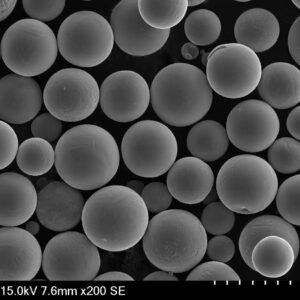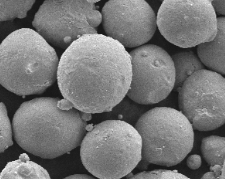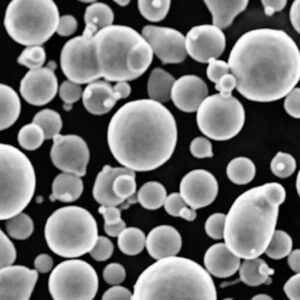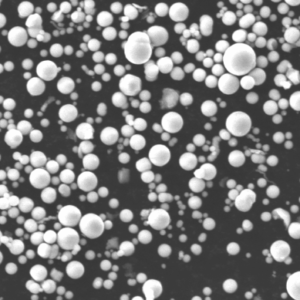Copper is an indispensable metal in the modern world, used in everything from electrical wiring to coinage. But when it comes to advanced manufacturing and industrial applications, high-purity copper powder stands out for its unique properties and versatility. This comprehensive guide will take you through the intricacies of high-purity copper powder, its types, applications, properties, and much more. Let’s dive in!
Overview of High-Purity Copper Powder
High-purity copper powder is a fine, free-flowing metallic powder known for its exceptional conductivity, malleability, and versatility. Used in a wide range of applications, from electronics to metal coatings, this powder is critical in industries that demand high performance and precision.
Key Details:
- Purity Levels: Typically, 99.9% to 99.999%
- Particle Size: Varies from nanometers to micrometers
- Applications: Electronics, metallurgy, 3D printing, coatings, and more

Types and Characteristics of High-Purity Copper Powder
High-purity copper powder comes in various types, each with specific characteristics suited to different applications. Here are some of the most notable ones:
| Type | Composition | Properties | Applications |
|---|---|---|---|
| Electrolytic | 99.9% Cu | High purity, good electrical conductivity | Electrical components, batteries |
| Atomized | 99.95% Cu | Spherical particles, excellent flowability | Metal coatings, additive manufacturing |
| Reduced | 99.98% Cu | Fine particles, high surface area | Catalysts, sintering processes |
| Precipitated | 99.97% Cu | Uniform particle size, high purity | Electronics, conductive inks |
| Nano Copper Powder | 99.999% Cu | Nanoscale particles, superior properties | Nanotechnology, medical applications |
Detailed Description of Specific Models
Let’s explore some specific models of high-purity copper powder, their features, and what makes them stand out.
- Electrolytic Copper Powder (ECP-100)
- Purity: 99.9%
- Particle Size: <100 microns
- Applications: Used extensively in electrical and electronic components due to its excellent conductivity.
- Atomized Copper Powder (ACP-200)
- Purity: 99.95%
- Particle Size: 10-200 microns
- Applications: Ideal for metal coatings and 3D printing owing to its spherical particle shape and flowability.
- Reduced Copper Powder (RCP-50)
- Purity: 99.98%
- Particle Size: <50 microns
- Applications: Preferred in catalyst and sintering processes for its high surface area and fine particle size.
- Precipitated Copper Powder (PCP-150)
- Purity: 99.97%
- Particle Size: 1-150 microns
- Applications: Commonly used in conductive inks and electronic applications for its uniform particle size and high purity.
- Nano Copper Powder (NCP-20)
- Purity: 99.999%
- Particle Size: <20 nanometers
- Applications: Utilized in cutting-edge nanotechnology and medical applications due to its superior properties at the nanoscale.
- High-Density Copper Powder (HDCP-500)
- Purity: 99.9%
- Particle Size: 20-500 microns
- Applications: Used in applications requiring high-density materials like metal injection molding.
- Spherical Copper Powder (SCP-100)
- Purity: 99.95%
- Particle Size: 50-100 microns
- Applications: Favored in 3D printing and metal coatings for its uniform spherical particles.
- Flake Copper Powder (FCP-300)
- Purity: 99.9%
- Particle Size: <300 microns
- Applications: Used in lubrication and conductive coatings due to its flake-like structure.
- Conductive Copper Powder (CCP-50)
- Purity: 99.95%
- Particle Size: <50 microns
- Applications: Primarily used in conductive adhesives and pastes.
- High-Purity Ultrafine Copper Powder (HPCP-10)
- Purity: 99.99%
- Particle Size: <10 microns
- Applications: Ideal for high-precision electronic applications and conductive inks.
Composition of High-Purity Copper Powder
Understanding the composition of high-purity copper powder is crucial for selecting the right type for your needs. Here’s a breakdown of the typical composition:
| Element | Percentage (%) |
|---|---|
| Copper (Cu) | 99.9 – 99.999 |
| Oxygen (O) | <0.1 |
| Other Impurities | <0.001 |
The high copper content ensures excellent electrical and thermal conductivity, while minimal impurities enhance performance in critical applications.
Properties and Characteristics
High-purity copper powder boasts a range of properties that make it ideal for various industrial applications. Let’s delve into these characteristics:
- Electrical Conductivity: Superior to most other metals, making it ideal for electrical applications.
- Thermal Conductivity: Excellent thermal properties ensure efficient heat dissipation in electronics.
- Malleability and Ductility: Easily shaped and formed, making it versatile for manufacturing processes.
- Corrosion Resistance: Good resistance to corrosion, particularly in pure forms, extending the lifespan of products.
- Surface Area: High surface area in finer powders enhances reactivity in chemical processes.
Applications of High-Purity Copper Powder
High-purity copper powder is utilized in a plethora of applications due to its outstanding properties. Here’s a table summarizing its diverse uses:
| Industry | Applications |
|---|---|
| Electronics | Conductive inks, printed circuit boards (PCBs), connectors |
| Metallurgy | Metal injection molding, sintering, brazing alloys |
| Additive Manufacturing | 3D printing, rapid prototyping |
| Coatings | Antimicrobial coatings, decorative coatings |
| Chemical Processes | Catalysts, chemical reactions |
| Medical | Antimicrobial agents, medical devices |
| Energy | Batteries, fuel cells |
Specifications, Sizes, Grades, and Standards
High-purity copper powder is available in various specifications to meet the specific needs of different industries. Here’s a detailed table:
| Specification | Details |
|---|---|
| Purity | 99.9% to 99.999% |
| Particle Size | Nano to micron scale (10nm to 500 microns) |
| Grade | Electrolytic, Atomized, Reduced, Precipitated, Nano |
| Standards | ASTM B216, ISO 9001 |
Suppliers and Pricing Details
The market for high-purity copper powder includes a range of suppliers. Here are some notable ones and their pricing details:
| Supplier | Location | Product | Price (per kg) |
|---|---|---|---|
| American Elements | USA | Electrolytic Copper Powder | $300 |
| Nanochemazone | Canada | Nano Copper Powder | $1500 |
| Sigma-Aldrich | Global | High-Purity Copper Powder | $400 |
| Shanghai Metal | China | Atomized Copper Powder | $350 |
| Metal Powder Supply | UK | Reduced Copper Powder | $375 |
Advantages and Disadvantages
Choosing high-purity copper powder involves understanding its pros and cons. Here’s a comparison:
| Aspect | Advantages | Disadvantages |
|---|---|---|
| Conductivity | High electrical and thermal conductivity | Potential oxidation without proper handling |
| Malleability | Easily shaped and formed for various applications | Can be expensive, especially at higher purity levels |
| Versatility | Suitable for a wide range of industrial applications | Requires specialized storage to prevent contamination |
| Availability | Widely available from numerous suppliers worldwide | Price fluctuations based on market demand and supply |

FAQs
| Question | Answer |
|---|---|
| What is high-purity copper powder? | It is a fine, free-flowing metallic powder with a copper purity of 99.9% or higher, used in various industrial applications. |
| How is high-purity copper powder produced? | Methods include electrolytic refining, atomization, reduction, and precipitation to achieve different purity levels and particle sizes. |
| What are the main uses of high-purity copper powder? | Applications range from electronics and additive manufacturing to coatings, catalysis, and medical devices. |
| Why is purity important in copper powder? | Higher purity ensures better electrical and thermal conductivity, improved performance, and fewer impurities affecting the final product. |














